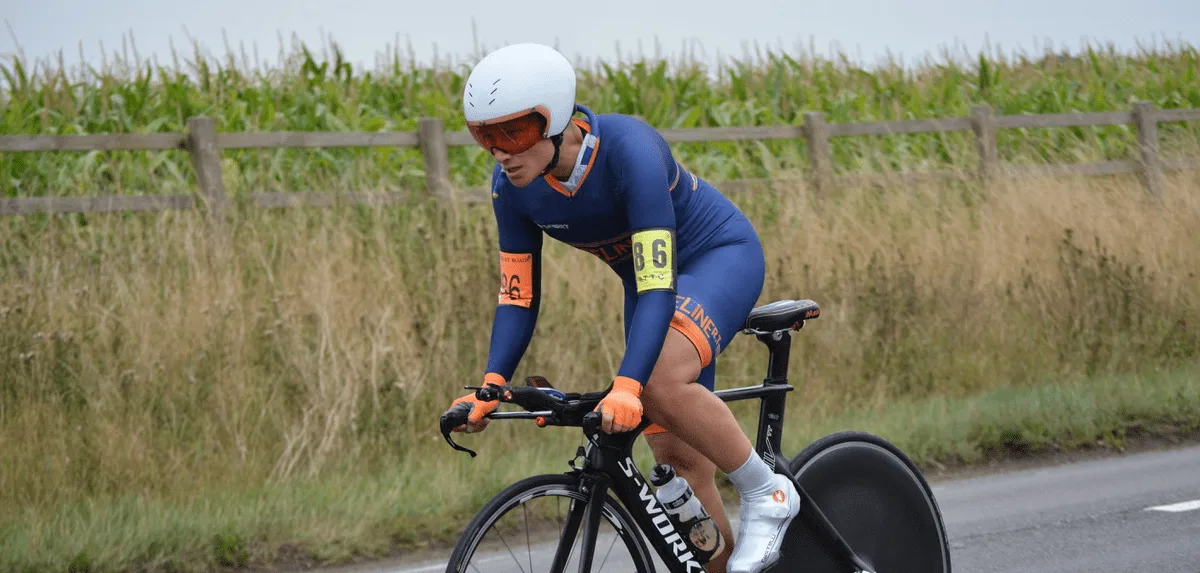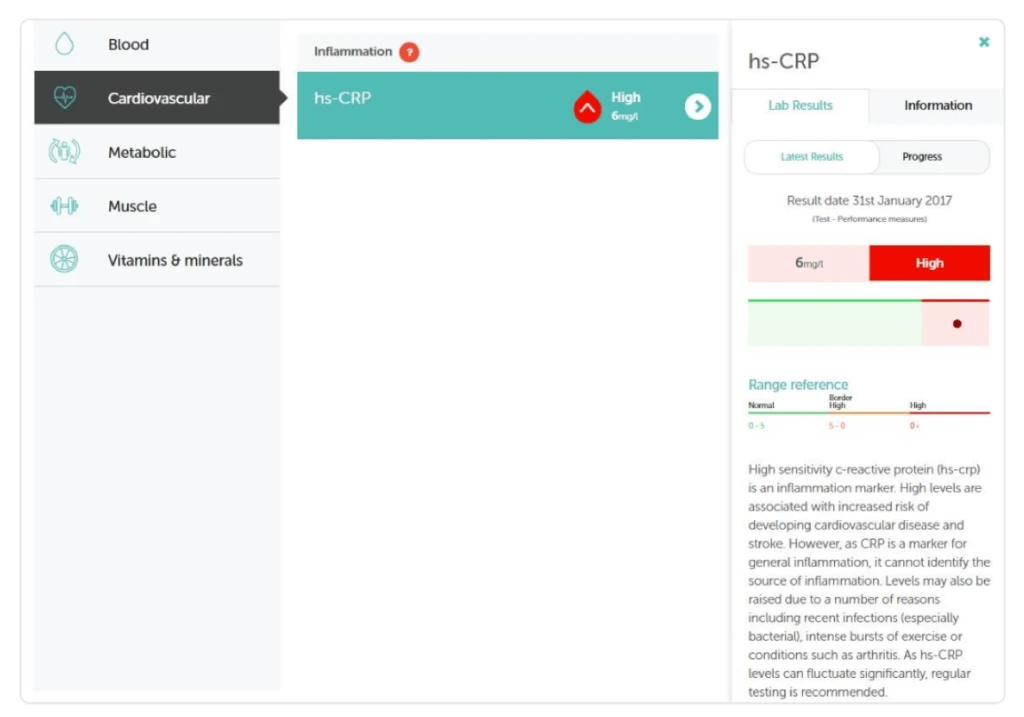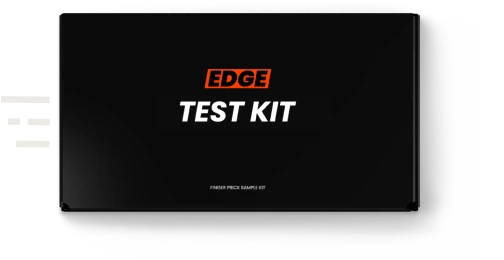
Cycling
Jasmijn Muller: Why I Use Forth Edge Blood Tests
Like many other amateur athletes, I try to combine a full-time job (as a management consultant), with my training. I am passionate about long distance cycle races and am currently preparing for a world record attempt from Land’s End to John o’ Groats, and beyond to also incorporate the 1,000 mile road record. Last summer after having ridden the route in training over a leisurely 5 days, I got a big health scare…
1 min read
Published on
March 18, 2017
Written by
EDGE
Share this article
I got a Deep Vein Thrombosis due to a combination of severe dehydration – it had been quite warm and I had suffered from food poisoning on route, as well as prolonged inactivity travelling down south on trains and cars and sitting behind my desk working through the nights to catch up with work. This health scare made me review my whole lifestyle.
For a number of years, I have been tracking my physical progress in training and performance in races, using a heart rate monitor and power meter. Since last summer I also started wearing a Fitbit to warn me when I have been sitting down for too long and to keep track of my sleeping patterns, food and water intake. But it also got me thinking more about what actually happens inside my body. I always knew that I was quite a heavy sweater, but an advanced sweat test allowed me to learn how much sodium I actually lose per litre of sweat and fine-tune my electrolyte supplementation. As a result, I no longer struggle with cramp in races and am more aware of keeping my fluid levels topped up.

While low hydration levels are relatively easy to detect (thirst, cramps, dark urine, clothes cakes in white sweat marks etc.), it can be harder to track what the impact of my nutrition and my training is on the inside of my body. During winter, I try to top up with supplements of vitamin C, iron and zinc in a bid to avoid illness. Throughout the racing season I drink beetroot juice as the additional nitrate is supposed to be good for endurance, and I recently started working with a nutritionist to fine-tune my feeding strategy for that big endurance record attempt later this year. But how do I know if what I am doing is right? Am I giving my body what it needs or are there things I could do to optimize my inner health that would in turn allow me to keep pushing just that little more in my training and races?
It was trying to better understand my health (and improve it) what intrigued me to take a Forth blood test that checks several biomarkers which are key to my health, wellbeing and performance. You may ask, why not just go to my GP? If something is obviously wrong with your health you can go to your GP for blood tests, but when there are no obvious signs and you just want to improve your health, the service offered by Forth can be very helpful. Just weeks before a big indoor record and at the start of the outdoor racing season, early February was a good time for a first blood test. It will be very interesting to compare these early results with my results mid-way throughout the season and at the end.
Ordering the test was easy. I went for the ‘Performance Measures’, a test designed for recreational and professional athletes, which includes 8 biomarkers that are essential for optimising sports performance. This kind of test requires a larger blood sample, so as soon as the order was received Forth set up a visit to a local clinic in West London who would take the blood sample for me.
The test was really fast and pain-free. Unlike previous experiences at the hospital (after a bike crash a few years ago and for my recent DVT), the phlebotomist knew exactly which vein to prick for a nice easy blood flow. Come to think of it, the hardest thing about the blood test was finding my way there and accidentally taking a wrong turn which sent me a long way down the M4 in the wrong direction.
Just 1 day after the blood sample was taken, I received a notification email from Forth that my results were posted to my online dashboard.
The dashboard is pretty cool and an easy way to track how many of my biomarkers are within the normal range, which ones need attention (and why importantly), and finally which types of food can help to optimise these biomarkers.
The two biomarkers that were taken that related to my blood, ferritin (which reflects the level of iron stored within my body) and haemoglobin (which transports oxygen to and CO2 from the cells), were both 100% in the normal range. Although my iron levels are fine, I appreciated reading the additional information that combining iron with vitamin C (as I do) helps for better absorption, and that tea on the other hand can interfere with absorption of iron. It’s always good to learn something new.
All biomarkers relating to my metabolic system and muscles are also perfectly within the normal range. As I start working with a nutritionist, this is important information. Knowing that everything is within range, and tracking it to make sure it stays within range as I try to shed a few kilograms over the next 6 months to help me over the Cornish and especially Scottish hills on fatigued legs during my LEJOG record attempt in September.

There is however one biomarker that is too high and that is hs-crp (high sensitivity c-reactive protein), an inflammation marker. I am not overly surprised as I did a long 6 hour turbo session on the Saturday, followed by a 2.5 hr tempo session on the Sunday, before getting tested on the Monday. As such, the inflammation is more likely to be as a result of recent intense exercise than more serious problems such as cardiovascular disease or a bacterial infection. More anti-oxidants (such as ginger and turmeric) can help to boost immune function and prevent inflammation. Again, that is good to know. I don’t like cooking, but I am blessed with a husband who loves to cook with lots of herbs and spices.
Finally, the biggest insight comes from the biomarkers relating to my vitamin and mineral levels. This shows that while my vitamin B12 levels are within the normal range – which is reassuring as I use vitamin 12 supplements and try to eat oily fish regularly – the test results showed that I had a significant vitamin D deficiency. I know Vitamin D is important for bone health as well as muscle function. I hadn’t yet experienced any of the health issues related to vitamin D deficiency (such as chronic fatigue, depression or chronic muscle pain). I understand how I may not get enough exposure to sunlight in the middle of British winter, but I think that it may be a problem that stems from longer ago. Normally I would get in plenty of sunlight during long rides out on the road in summer, but this summer I spent three months just training indoor due to my DVT. Particularly for cyclists who do most of their training indoors on their turbo, vitamin D levels are an important area to keep an eye on. Based on advice given by a nutritionist, I have since started taking high strength vitamin D3 supplements as it isn’t possible to meet daily vitamin D requirements through food alone.
So far, I have been impressed by Forth’s biomarker testing and I look forward to tracking my progress in a few months’ time to make sure my inner health is still optimised as I approach my big road cycling goals for this year.
You can follow Jasmijn by visiting her blog www.duracellbunnyonabike.com
Blood test for
Female Cyclist
19 Biomarkers Included
sports doctor review
Results in 2 working days
Flexible subscription
Get 10% off your first order
Want regular tips on how to make the most of your results? Join our newsletter and we'll give you 10% off your order!
